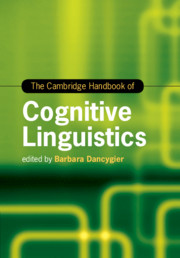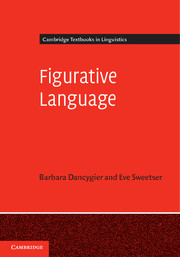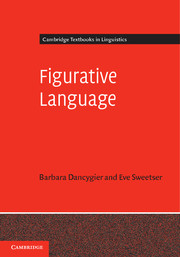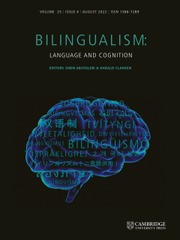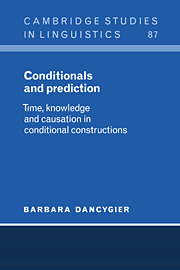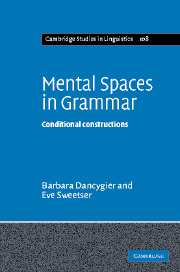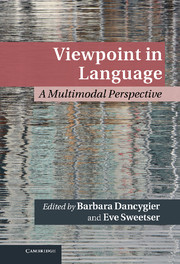The Cambridge Handbook of Cognitive Linguistics
The best survey of cognitive linguistics available, this Handbook provides a thorough explanation of its rich methodology, key results, and interdisciplinary context. With in-depth coverage of the research questions, basic concepts, and various theoretical approaches, the Handbook addresses newly emerging subfields and shows their contribution to the discipline. The Handbook introduces fields of study that have become central to cognitive linguistics, such as conceptual mappings and construction grammar. It explains all the main areas of linguistic analysis traditionally expected in a full linguistics framework, and includes fields of study such as language acquisition, sociolinguistics, diachronic studies, and corpus linguistics. Setting linguistic facts within the context of many other disciplines, the Handbook will be welcomed by researchers and students in a broad range of disciplines, including linguistics, cognitive science, neuroscience, gesture studies, computational linguistics, and multimodal studies.
- Shows that cognitive linguistics is a paradigm which can naturally compete with generative linguistics
- Demonstrates that work done within cognitive linguistics can offer a broader view of language than work done within other frameworks
- Places cognitive linguistics in the context of broad theories of cognitive science, experimental neuroscience, and language pedagogy, showing readers the rich connections and interdisciplinary temperament of the field
Reviews & endorsements
Advance praise: 'This is the definitive introduction to cognitive linguistics that the mature field deserves, written by the leading practitioners in cognitive approaches to grammar, semantics, conceptual structure, phonology, and everything in-between (and all around). I can't imagine a better introduction for students of language.' Benjamin K. Bergen, University of California, San Diego
Product details
April 2021Paperback
9781107544208
842 pages
245 × 170 × 42 mm
1.41kg
70 b/w illus. 10 tables
Available
Table of Contents
- Introduction Barbara Dancygier
- Part I. Language in Cognition and Culture:
- 1. Opening commentary: language in cognition and culture N. J. Enfield
- 2. Relationships between language and cognition Daniel Casasanto
- 3. The study of indigenous languages Sally Rice
- 4. First language acquisition Laura E. De Ruiter and Anna L. Theakston
- 5. Second language acquisition Andrea Tyler
- Part II. Language, Body, and Multimodal Communication:
- 6. Opening commentary: polytropos and communication in the wild Mark Turner
- 7. Signed languages Sherman Wilcox and Corinne Occhino
- 8. Gesture, language, and cognition Kensy Cooperrider and Susan Goldin-Meadow
- 9. Multimodality in interaction Kurt Feyaerts, Geert Brône and Bert Oben
- 10. Viewpoint Lieven Vandelanotte
- 11. Embodied intersubjectivity Jordan Zlatev
- 12. Intersubjectivity and grammar Ronny Boogaart and Alex Reuneker
- Part III. Aspects of Linguistic Analysis:
- 13. Opening commentary: linguistic analysis John Newman
- 14. Phonology Geoffrey S. Nathan
- 15. The construction of words Geert Booij
- 16. Lexical semantics John R. Taylor
- 17. Cognitive grammar Ronald W. Langacker
- 18. From constructions to construction grammars Thomas Hoffmann
- 19. Construction grammars Thomas Hoffmann
- 20. Cognitive linguistics and pragmatics Kerstin Fischer
- 21. Fictive interaction Esther Pascual and Todd Oakley
- 22. Diachronic approaches Alexander Bergs
- Part IV. Conceptual Mappings:
- 23. Opening commentary: conceptual mappings Eve Sweetser
- 24. Conceptual metaphor Karen Sullivan
- 25. Metonymy Jeannette Littlemore
- 26. Conceptual blending theory Todd Oakley and Esther Pascual
- 27. Embodiment Raymond W. Gibbs, Jr
- 28. Corpus linguistics and metaphor Elena Semino
- 29. Metaphor, simulation, and fictive motion Teenie Matlock
- Part V. Methodological Approaches:
- 30. Opening commentary: getting the measure of meaning Chris Sinha
- 31. The quantitative turn Laura A. Janda
- 32. Language and the brain Seana Coulson
- 33. Cognitive sociolinguistics Willem B. Hollmann
- 34. Computational resources: framenet and constructicon Hans C. Boas
- 35. Computational approaches to metaphor: the case of MetaNet Oana A. David
- 36. Corpus approaches Stefan Gries
- 37. Cognitive linguistics and the study of textual meaning Barbara Dancygier
- Part VI. Concepts and Approaches: Space and Time:
- 38. Linguistic patterns of space and time vocabulary Eve Sweetser and Alice Gaby
- 39. Space-time mappings beyond language Alice Gaby and Eve Sweetser
- 40. Conceptualizing time in terms of space: experimental evidence Tom Gijssels and Daniel Casasanto
- 41. Discovering spatiotemporal concepts in discourse Thora Tenbrink.

